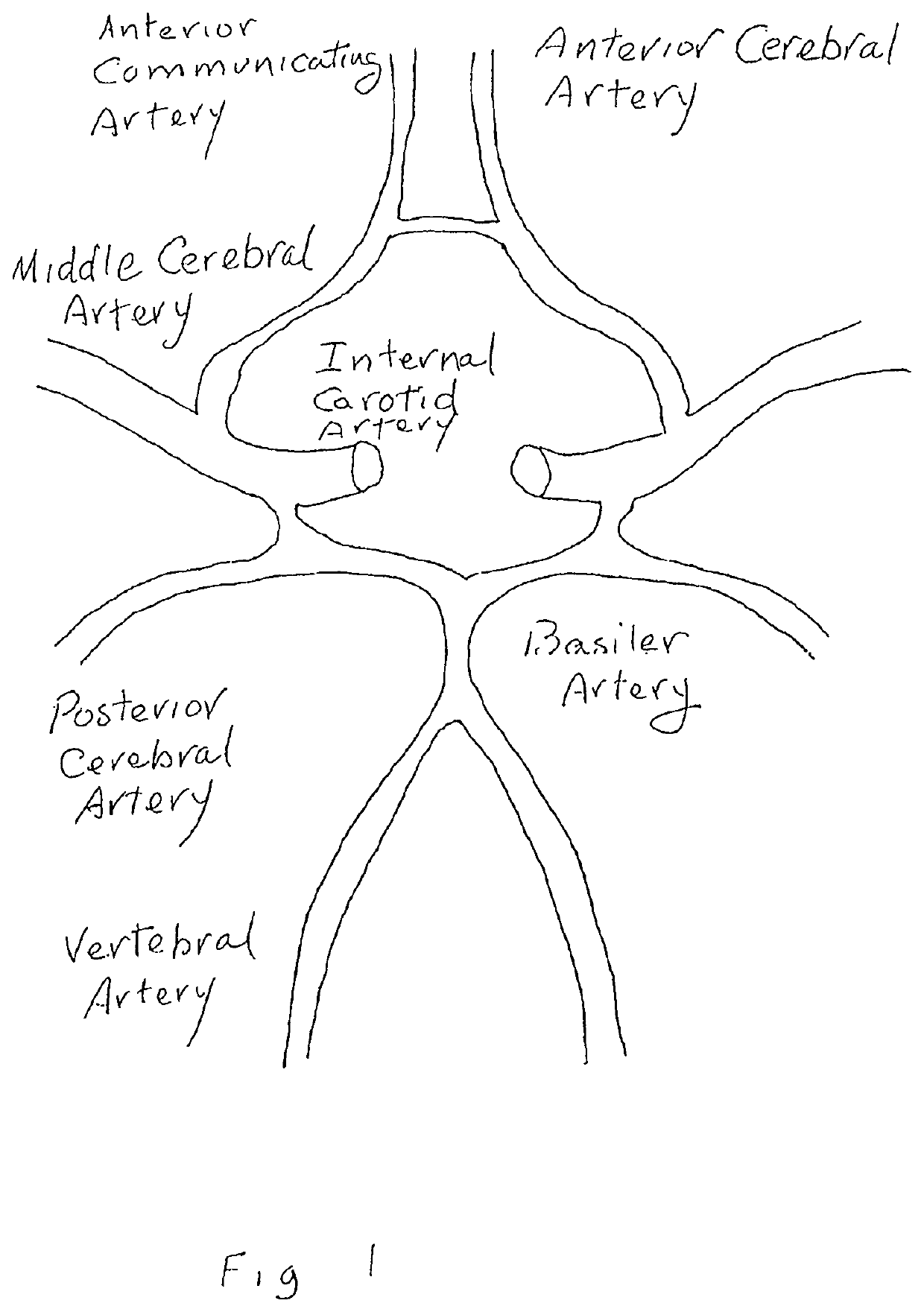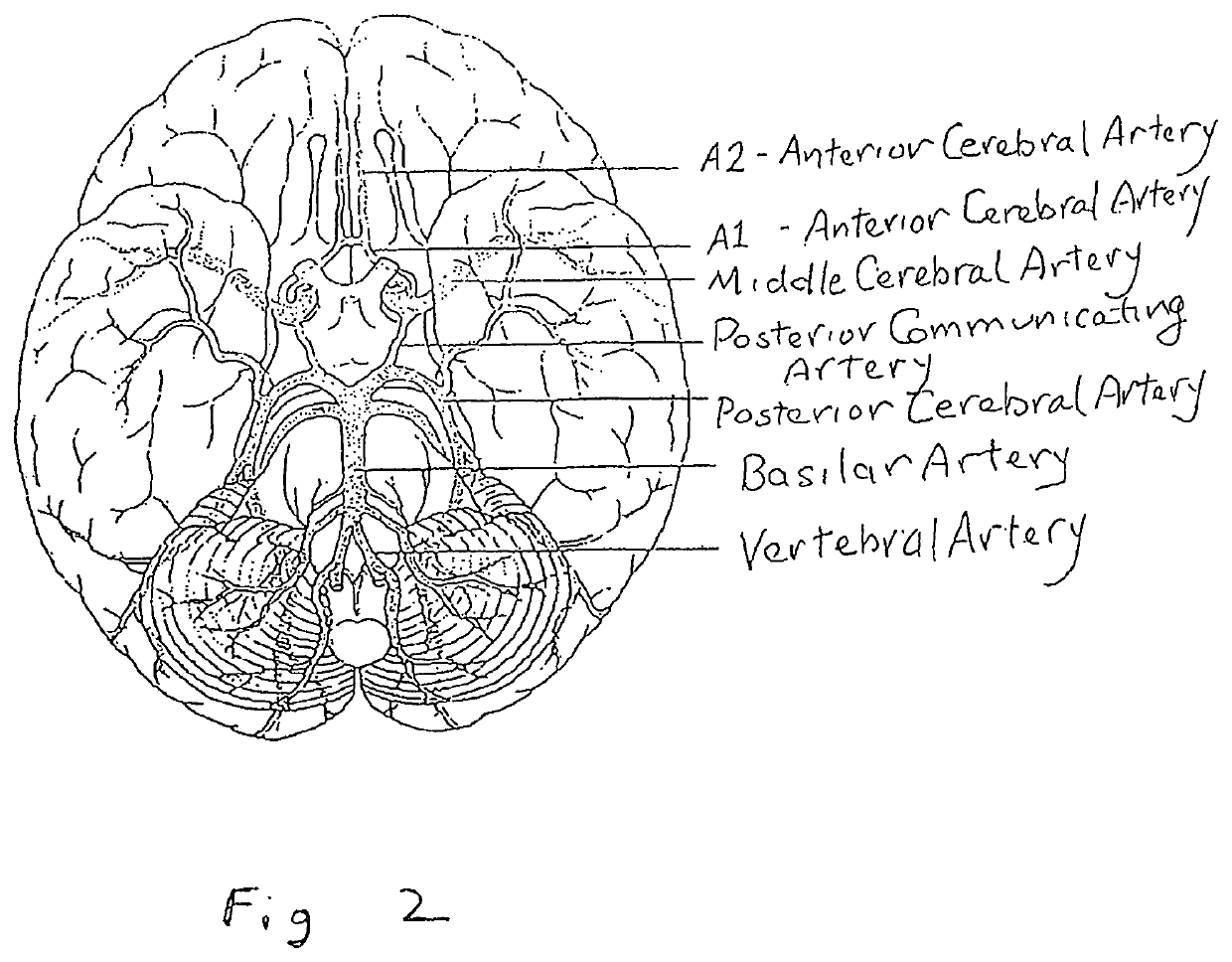The application of
irrigation alone into the clot would tend to propagate any loose pieces—whether they are existing loose pieces or lose pieces created by maceration.
Venous cases have a further
disadvantage that the vessels with
thrombus are typically much larger, so if continuous simultaneous aspiration was applied, the patient would have massive
blood loss.
If it did exist and aspiration was applied continuously, in many of these cases there could be massive, often life-threatening,
blood loss.
For reasons that are not entirely understood, the vessel wall can become fatigued and abnormally weak and possibly rupture.
It generally is recognized that these systems are somewhat artificial distinctions and do not reflect accurately the coagulation cascades that occur
in vivo.
Since most arterial thrombi occlude the vessel in which they occur, they often lead to
ischemic necrosis of tissue supplied by that
artery, i.e., an infarct.
Those venous thrombi that are large or those that have propagated proximally are a significant
hazard to life, since they may dislodge and be carried to the lungs as pulmonary emboli (Id).
The
occlusion of different cerebral vessels results in diverse neurologic deficits caused by
stroke.
For example,
occlusion at the trifurcation of the
middle cerebral artery deprives the parietal cortex of circulation and produces motor and sensory deficits.
The latter often results from systemic hypotension (e.g., shock), and produces
infarction in the border zones between the distributions of the major
cerebral arteries.
If prolonged, severe hypotension can cause widespread brain
necrosis.
This will eventually lead to hemorrhagic
necrosis and vasogenic
edema in the affected area.
Because venous obstruction causes stagnation upstream, abrupt
thrombosis of the sagittal sinus results in bilateral hemorrhagic infarctions of the
frontal lobe regions.
However, the use of fibrinolytic therapy comprises many drawbacks, including, without limitation, allergic reactions,
embolism,
stroke, and reperfusion arrhythmias, among others.
In addition, fibrinolytic agents have limited
efficacy in certain conditions.
For example, although tPA is an accepted treatment for treatment of
acute ischemic stroke, the
drug's ability to recanalize a vessel is poor in some cases.
In some instances, fibrinolytic agents cannot be used at all.
Distal thrombectomy is a technically difficult procedure (Singh P. et al.
Despite good clinical outcome, limitations of this device include operator
learning curve, the need to
traverse the occluded
artery to deploy the device distal to the
occlusion, the duration required to perform multiple passes with the device, clot fragmentation and passage of an
embolus within the bloodstream (Meyers P. M. et al.
These stents are not ideal for treating intracranial
disease due to their rigidity which makes navigation in the convoluted intracranial vessels difficult (Singh P. et al.
These include the requirement for double anti-
platelet medication, which potentially adds to the risk of hemorrhagic complications, and the risk of in-
stent thrombosis or
stenosis.
However, there is a general reluctance to puncture the right
brachial artery due to the need to navigate through the innominate
artery and arch and due to the risk for complications such as direct nerve trauma and ischemic occlusion resulting in long-term disability (Alvarez-Tostado J. A. et al.
Despite the potential to diminish
procedure time and to improve recanalization rates, drawbacks to using these devices remain.
Thus, at present, there does not appear to be a universally superior
mechanical thrombectomy device that provides sufficient aspiration force without obstructing aspiration, is manageable in terms of size and flexibility, and is quick / easy to remove while preventing emboli from going to end organs.
At the point of an
aneurysm, there is typically a bulge, where the wall of the
blood vessel or organ is weakened and may rupture.
As blood flows within the
parent artery with an
aneurysm,
divergence of
blood flow, as occurs at the inlet of the
aneurysm, leads to dynamic disturbances, producing increased lateral pressure and retrograde vortices that are easily converted to turbulence.
Approximately 0.14% of the United States
population has an intracranial AVM that poses a
significant risk and represents a major life
threat, particularly to persons under the age of 50 years.
However, the presence of a brain AVM in the normal circulation introduces a second abnormal circuit of
cerebral blood flow where the
blood flow is continuously shunted under a high
perfusion pressure through the AVM, possessing a low cerebrovascular resistance and low
venous pressure.
The clinical consequence of the abnormal shunt is a significant increase in blood returning to the heart (approximately 4 to 5 times the original amount, depending on the
diameter and size of the shunt), resulting in a dangerous overload of the heart and cardiac failure.
As the plaques form, the walls become thick, fibrotic, and calcified.
High
wall shear stress mechanically damages the inner wall of the artery, initiating a
lesion.
The presence of atherosclerotic lesions introduces an irregular vessel surface, resulting in
turbulent blood flow, thus causing the dislodgment of plaques of varying size into the bloodstream.
The clip remains in place, causing the aneurysm to shrink and permanently scar.
Emboli can originate from distant sources such as the heart, lungs, and
peripheral circulation, which could eventually travel within the cerebral blood vessels, obstructing flow and causing stroke.
For reasons that are not entirely understood, the vessel wall can become fatigued and abnormally weak and possibly rupture.
The
counterforce may be due to a lack of available space to insert the last coil.
 Login to View More
Login to View More  Login to View More
Login to View More 


